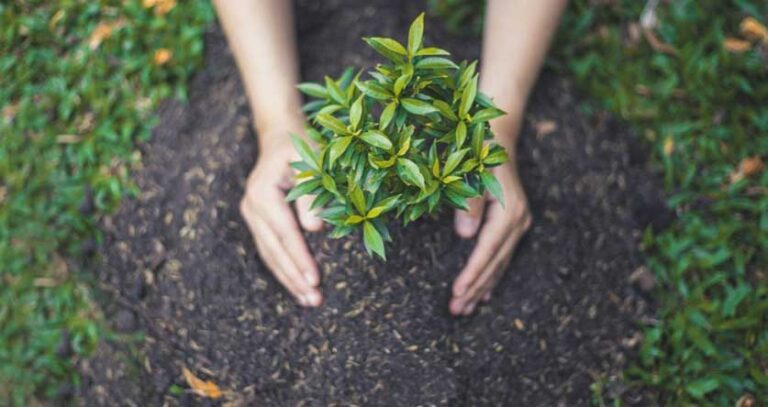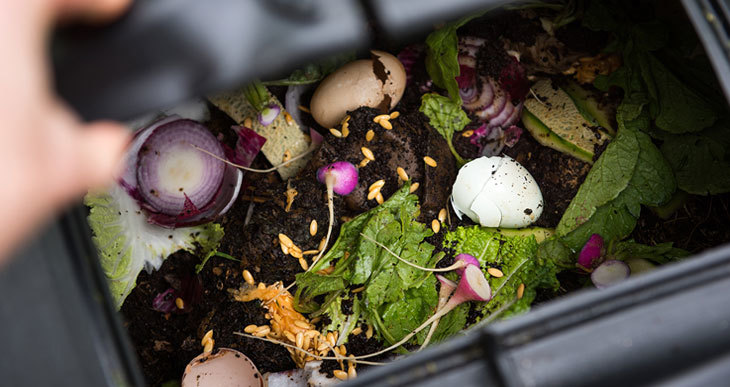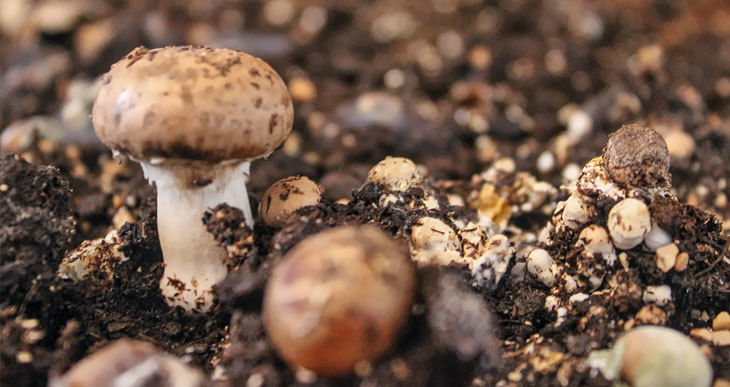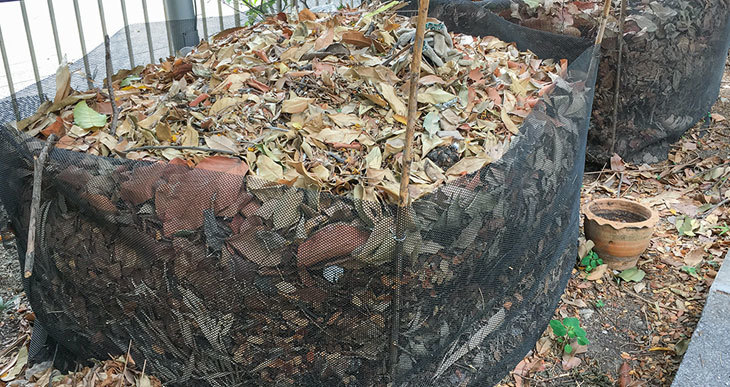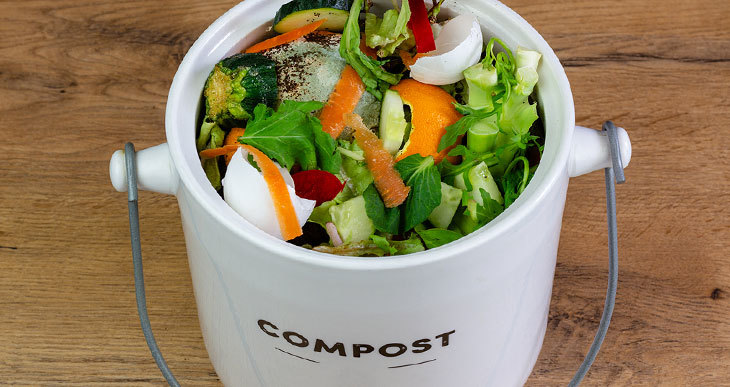Adding Soil to Compost (The Secret Ingredient?)

You may have heard that putting soil in compost is the right thing to do. But knowing why, how much, or what type of soil you should add can be a bit confusing.
Rest assured, the answers are pretty simple and here I’ll explain everything you need to know about the use of dirt in compost.
The results can be surprisingly positive !
Why add soil to compost
I used to think that adding soil to compost was pointless. After all, you’re supposed to put compost into the soil, not the other way around… Right ?
Now I know better.
Soil is absolutely bursting with life !
A handful of the stuff contains millions of microorganisms and other useful compost grubs, bugs, and critters.
And as you know, the process of composting relies on bacteria to break down the raw materials. So by adding soil to raw compost ingredients you are essentially doing two things:
- Adding a compost activator
- Supplying a compost inoculant.
Activators include all kinds of substances that gardeners use to speed up the rotting process, especially in the beginning when you put a lot of new material in a heap.
(examples of compost activators include things like organic blood meal or alfalfa meal)
When you add soil you’re also including a bunch of beneficial microorganisms which accelerate the composting process, and potentially improve the quality of your finished compost (and if you’re lucky you might even get a worm or two!)
Compost inoculators are just another type of activator. They tend to be made up of bacteria and fungi which are dormant until added to the compost mixture. The idea is they add the right kind of microbes for satisfactory and faster composting.
But soil already contains a huge amount of microbial life. Therefore soil provides you with a natural (and free) inoculator for composting.
There are a couple of other reasons why throwing soil on your compost pile can be beneficial.
Occasionally your compost can hit a snag, and you discover that it’s turned very smelly or that it’s attracting insects or flies.
(Read: the truth about smelly compost)
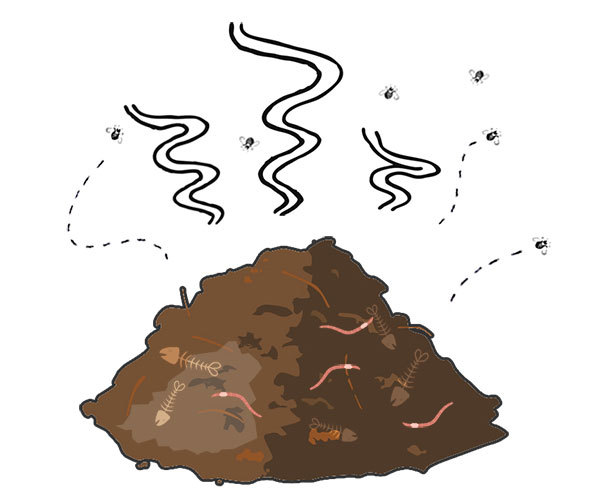
A bit of dirt can be a very efficient solution to these kinds of problems.
If your compost smells bad, try adding a couple of inches of topsoil to the heap. This will act as a kind of biofilter to neutralize the smelly gases being released.
Also, the source of bad odors is usually the presence of anaerobic microbes (the type that thrives without oxygen). The soil will help balance the compost mix by introducing the right kind of bacteria (the oxygen-loving kind).
If your compost is infested by flies, these are usually fruit flies. As their name suggests they’re attracted to any rotting fruit and vegetables you may have included in the pile. The same problem is generally true of ants.
A layer of soil will physically prevent them from getting access to any fruit or kitchen scraps.
Can I Add Soil to My Compost Bin
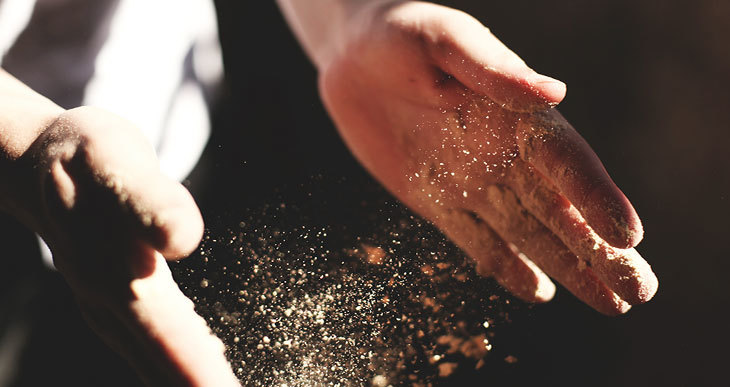
You can, and you probably should include a small amount of soil in your compost. It can help speed up the composting process and also prevent common composting problems like odors or insects.I’ve even heard reports from other gardeners who say regularly adding dirt gives rise to correctly-finished compost in much less time, and with a much better texture and composition !
What Type of Soil to Use in Compost
Probably the best type of soil to include in compost is “loam”. This is the term for well balanced fertile soil containing sand, silt, clay, and decaying organic matter. This means it has pretty much the ideal composition for most gardens.
E.g., A balanced, nutrient-rich soil with a high concentration of microorganisms, and humus for good structure.
Sounds great right ?
But the soil in Arizona will be completely different from the soil in Pennsylvania. Even your neighbor’s soil could be very different from your own backyard.
Don’t get hung up on finding the perfect soil for your compost. Most of the time you will be adding something beneficial, as long as it’s free of artificial additives and doesn’t have too many rocks or pebbles.
Tip: avoid collecting soil from fields where you don’t know what chemicals have been sprayed. Most herbicides and insecticides can be toxic for compost microorganisms.
Can I Put Potting Soil in my Compost
Yes, you can put potting soil in your compost, especially if it’s old and used.
Old potting soil contains decomposed organic material from flowers, roots, stems, leaves, and more. This organic material will be beneficial to the overall structure of compost.
Potting soil is designed to hold onto water and other nutrients. It consists of peat moss, bark, and similar ingredients. So potting soil will help your compost pile retain moisture.
Can You Put Clay Soil in Compost
If you have very sandy soil in your backyard, putting clay soil in your compost can help compensate. The finished clay-rich compost will help balance the composition of your topsoil.
Clay holds water extremely well. The very fine particle size holds on to water molecules much better compared to larger sand particles. Compost with clay will improve the water retention properties of your backyard soil.
Because clay retains moisture so well, it could also help improve the conditions in your compost heap, especially if you find that it tends to dry out quickly (this can be a problem sometimes in bins that get too hot, or are too well ventilated).
The flip side of adding clay to compost is that too much moisture in compost reduces air circulation. And composting microbes need oxygen to survive.
Just make sure you include plenty of course material to improve the compost structure and help favorize airflow.
How Much Soil Should I Put in my Compost?
Before you start flinging huge amounts of your backyard topsoil into the compost, wait for just a second 🙂
Large amounts of soil will have no real extra benefit.
If your aim is to mask odors or deter flying bugs then a two inch covering will suffice.
And as a general rule of thumb, try not to go above 10% of soil by volume *. For the best results, add two to three shovels of soil for every 6 inches or so of other compost matter, and mix it into the pile
* as suggested by John Jeavons is his well known book: “How to grow more vegetables”
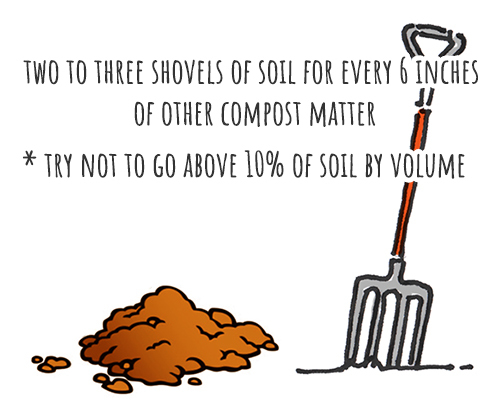
Does Adding Soil to Compost Help?
Whatever the type of soil you have available, getting into the habit of throwing a few spadefuls into compost each time you add new materials will only be advantageous.
Just be sure that the soil you use is dry, not wet.
Some gardeners keep a stock of spare soil in a container near the compost bin for this purpose.
I think you’ll find the results will be “surprisingly positive” !


